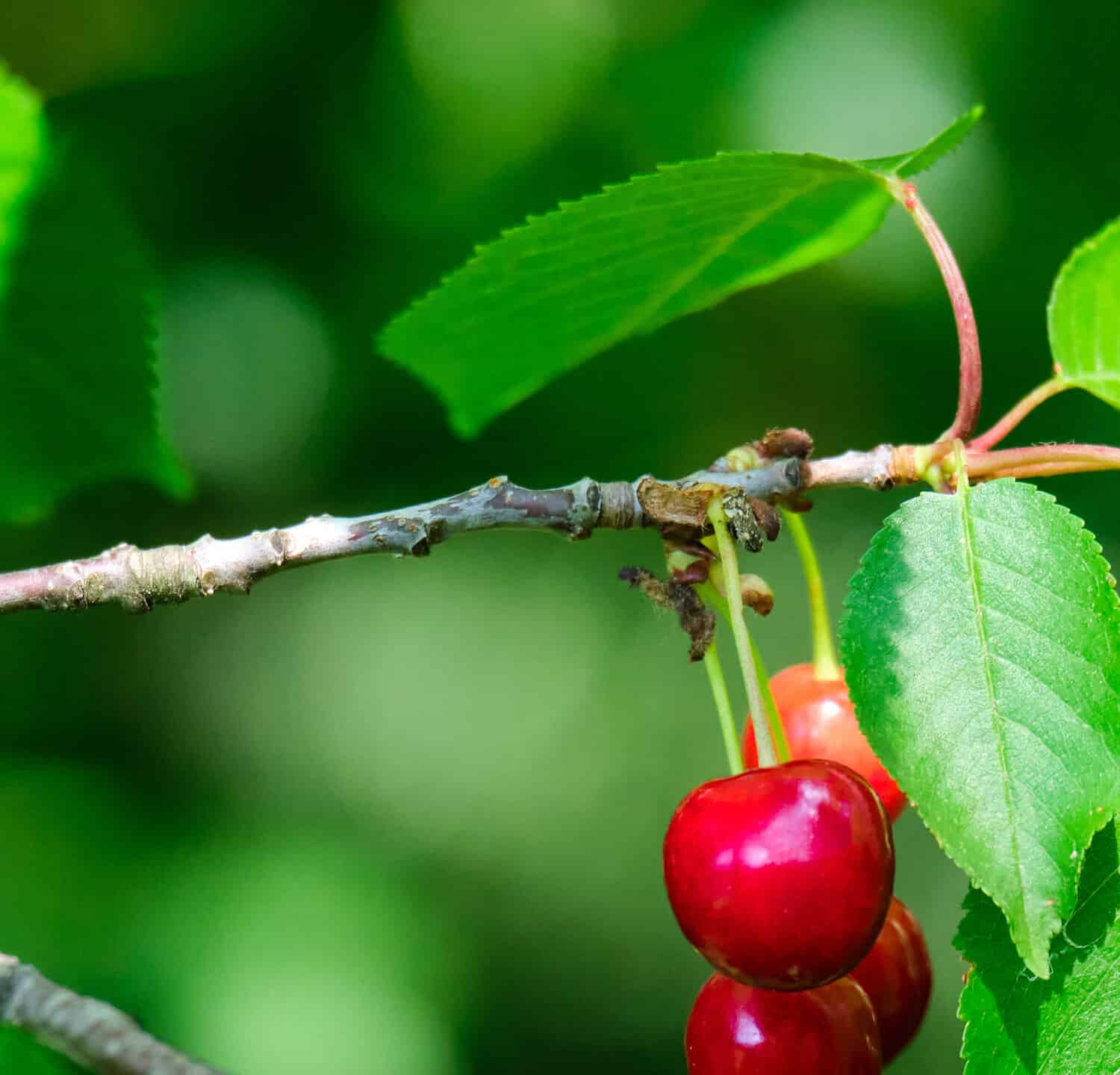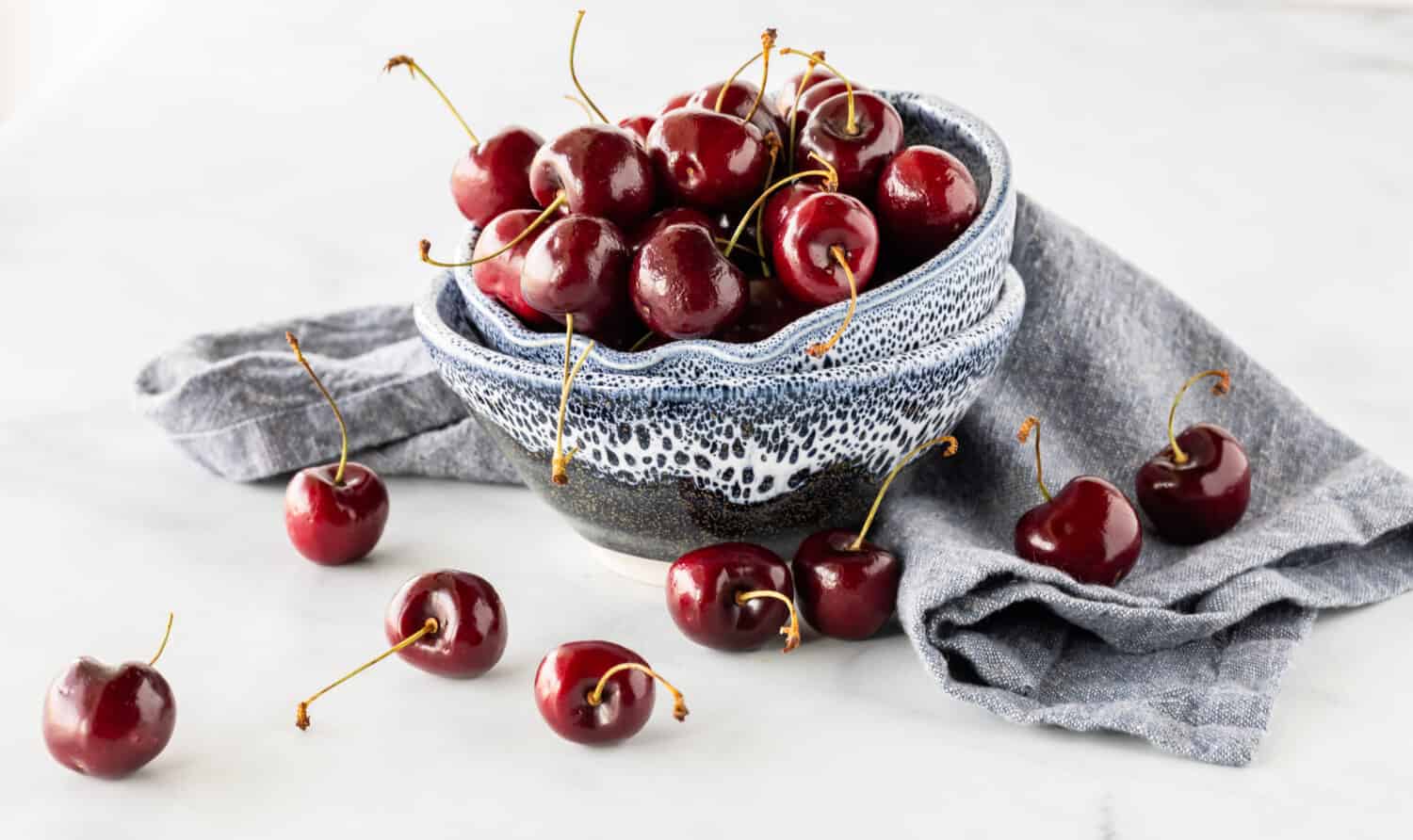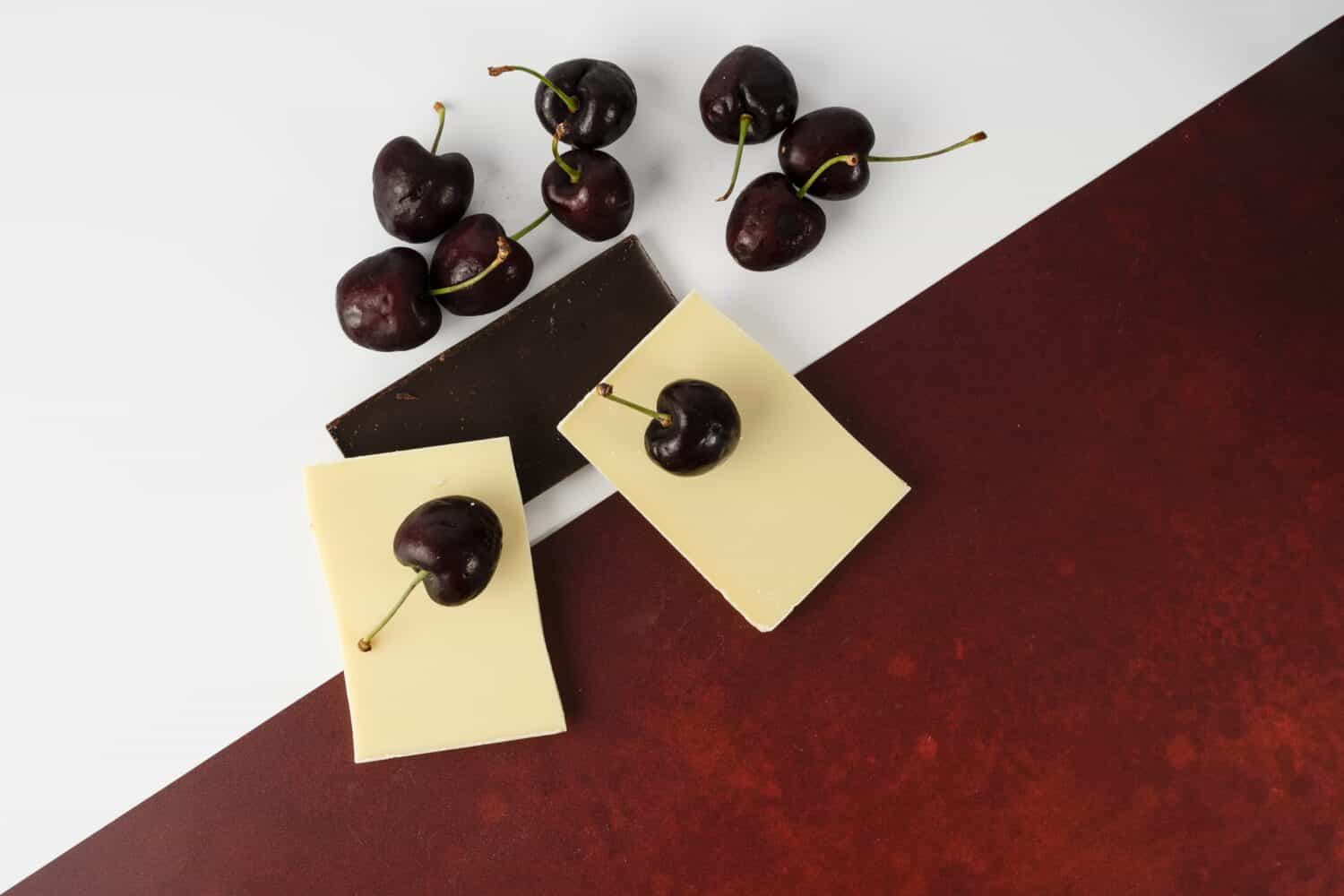Springs and summers in North America mean cherry-picking season. Cherries are stone fruits that can be either sweet or sour. And they can be used in many recipes. Most people find cherries at the grocery store, but you can also plant cherry trees or forage for wild cherries. Check out these 10 different types of cherries and discover their taste profiles and best uses, including where you can find them.
1. Bing Cherry

Bing cherries are large, firm, and dark red. They are one of the different types of cherries
©Jack Shiner/Shutterstock.com
Originating in the Pacific Northwest, the bing cherry is a type of sweet cherry and one of the most commonly produced varieties of sweet cherry in the United States. These fruits are large, firm, and dark red. And they are high in antioxidants, which may help those suffering from arthritis or gout. Look for these in your local grocery store, or grow them in your backyard!
Taste profile: sweet with a subtle tartness and a tangy aftertaste.
Best uses: you can use them to flavor deserts or incorporate them into breads, scones, cakes, pies, and cobblers. You can also make jams, compotes, preserves, and syrups.
2. Black Cherry

The black cherry tree produces small and dark red cherries
©iStock.com/TeleMakro Fotografie (Ina Hensel)
Black cherry is a native tree or shrub to the Eastern United States, where it grows wild. This cherry species is closely related to the chokecherry, another wild cherry tree. You can find black cherries growing wild in old fields in the open sun, but you can also find them in forests and roadside ditches. These cherries are relatively small and dark red.
Taste profile: Very sweet with no hint of bitterness
Best uses: use it to flavor brandy and rum. You can also use them to make wines and jellies. These fruits can also be medicinal and used to make cough syrups.
3. Chokecherry

Chokecherry trees reach up to 30 feet tall.
©iStock.com/Elenakirey
Also known as bitter cherry, these cherry trees grow wild throughout Canada and the Northern United States. While natives have used this fruit to treat common ailments, the stones and leaves of the chokecherry are poisonous to livestock. People should also avoid eating the leaves, bark, and raw seeds. However, the flesh of the berries is fine.
Taste profile: astringent and acidic
Best uses: despite their harsh flavor, chokecherries can make excellent wines, syrups, jams, and jellies.
4. Rainier Cherry

Rainier cherries taste sweet and floral
©patjo/Shutterstock.com
The Rainier cherry is a premium cultivar and a cross between bings and vans. You can find these cherries in the store during spring and summer, or you can grow them in zones four through nine. Rainier cherries have thick, watery flesh and thin skin, and they have a creamy yellow and light red color.
Taste profile: sweet, floral, and peach-like
Best uses: they are most often eaten fresh and raw. But you can also toss them with a salad, stir them into acai bowls, incorporate them into desserts, or top waffles and pancakes.
5. North Star Cherry

North Star cherries are popular trees for yads and gardens
©D W Graves Photography/Shutterstock.com
The North Star cherry is a sour cultivar developed in Minnesota as a cold hardy and self-pollinating fruit. These cherry trees are popular for growing in yards and gardens.
Taste profile: very tart with a sweet finish
Best uses: excellent for making deserts, wines, jams, and sauces.
6. Lapins Cherry

lapins cherries are popular late-season cherries
©Andrey Mihaylov/Shutterstock.com
This high-quality cultivar was developed in British Columbia and is known for its beautiful presentation and as an excellent pollinator for other cherries. These cherries are a popular late-season variety grown in hardiness zones five through eight.
Taste profile: mild and sweet
Best uses: they make excellent preserves, but you can also use them to make pies, ice cream, and cakes.
7. Chelan Cherry

Chelan cherries are large, heart-shaped, and deep red
©Carey Jaman/Shutterstock.com
The Chelan cherry is another popular cultivar developed in Washington. And it is an early-bearing tree that grows best in hardiness zone five. Chelan cherries are large, heart-shaped, and deep red with firm flesh.
Taste profile: very sweet and juicy
Best uses: These sweet and traditional cherries make excellent pies, sauces, preserves, and other desserts
8. Cornelian Cherry

Cornelian cherries are acidic and sweet
©iStock.com/RuudMorijn
These large deciduous ornamental trees are commonly placed in home landscapes. These cherry trees are part of the dogwood family and produce bright red berries. Cornelian cherry is native to Europe and Asia.
Taste profile: acidic and sweet
Best uses: This fruit is best used in dried form, as preserves, or added to wine and liqueur. You can also use Cornelian cherries to make sherbets and marmalades or infuse them into tea or vodka.
9. Montgomery Cherry
The Montgomery is a sour cherry variety and is grown in Europe, the United States, and Canada. This fruit is large and light, bright red, and the most popular cherry for making cherry pie.
Taste profile: tart, rich, and tangy
Best uses: use them in preserves, jams, pies, and other baked goods
10. English Morello Cherry

English Morello cherries grow in zones four through nine
©Cliff Day/Shutterstock.com
The English Morello cherry is an older cherry that has been grown for many centuries. It is a sour cherry tree that produces crimson red fruit with wine-like juice. These cherry trees have growing zones of four through nine.
Taste profile: rich and sour
Best uses: jams, desserts, alcoholic drinks. You can also use English Morello in savory cooking with vegetables, meat, and fish.
Different Types of Cherries: A Recap of the Top 10
| Types of Cherries | Taste Profile | Best Uses |
|---|---|---|
| Bing cherry | Sweet and slightly tart | Deserts, breads, jams, syrups |
| Black cherry | Very sweet with no bitterness | Jellies, wines, rum, brandy, cough syrup |
| Chokecherry | Astringent and acidic | Wines, syrups, jams, jellies |
| Rainier cherry | Sweet and floral | Toppings for salads, bowls, and pancakes |
| North Star cherry | Very tart with a sweet finish | Deserts, wines, jams, sauces |
| Lapins cherry | Mild and sweet | Preserves, ice cream, pies, cakes |
| Chelan cherry | Very sweet and juicy | Desserts and sauces |
| Cornelian cherry | Acidic and sweet | Wine, liqueur, marmalades |
| Montgomery cherry | Tart, rich, and tangy | Cherry pie, baked goods, jams, preserves |
| English Morello cherry | Rich and sour | Savory cooking, alcoholic drinks, jams, desserts |
Thank you for reading! Have some feedback for us? Contact the AZ Animals editorial team.







